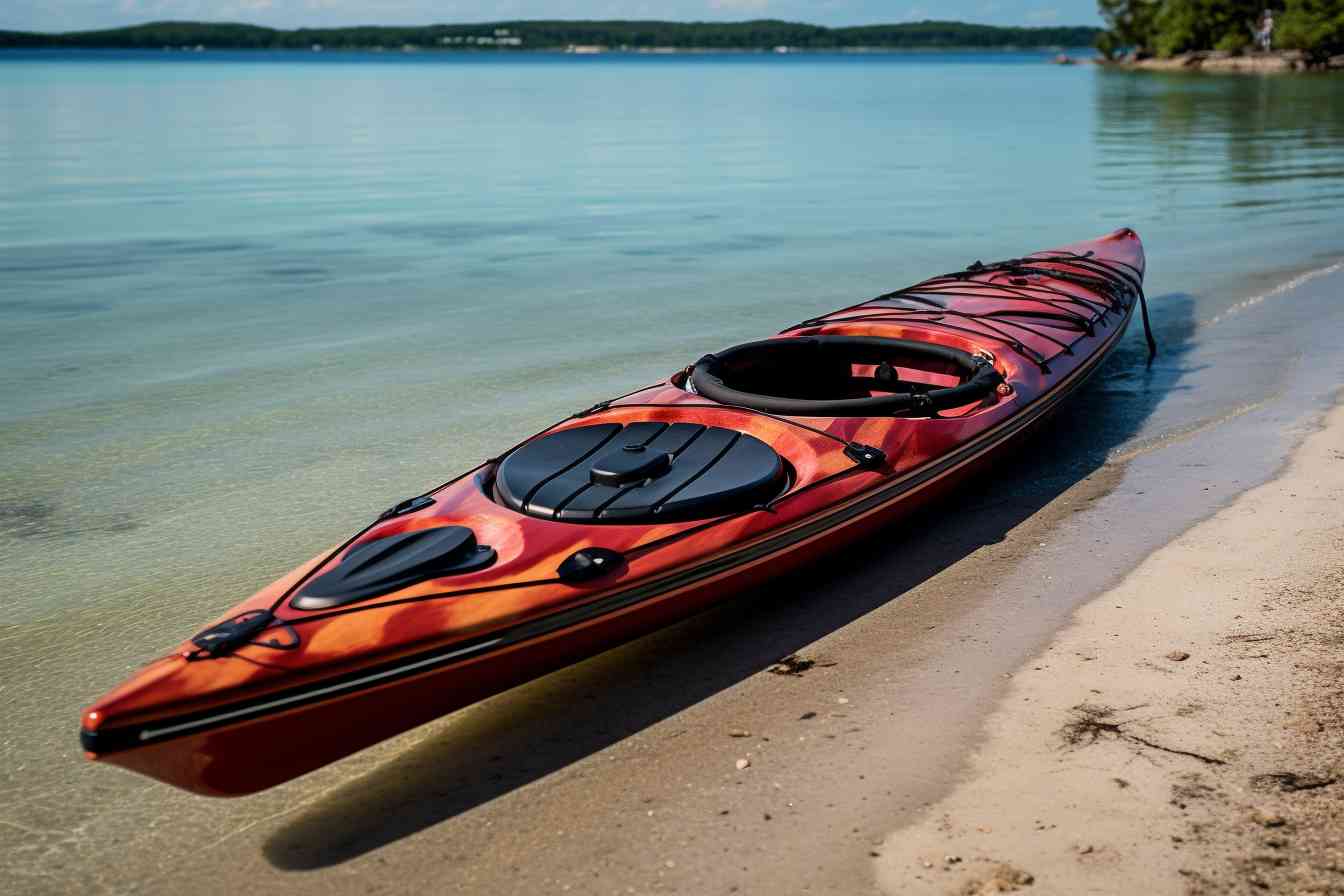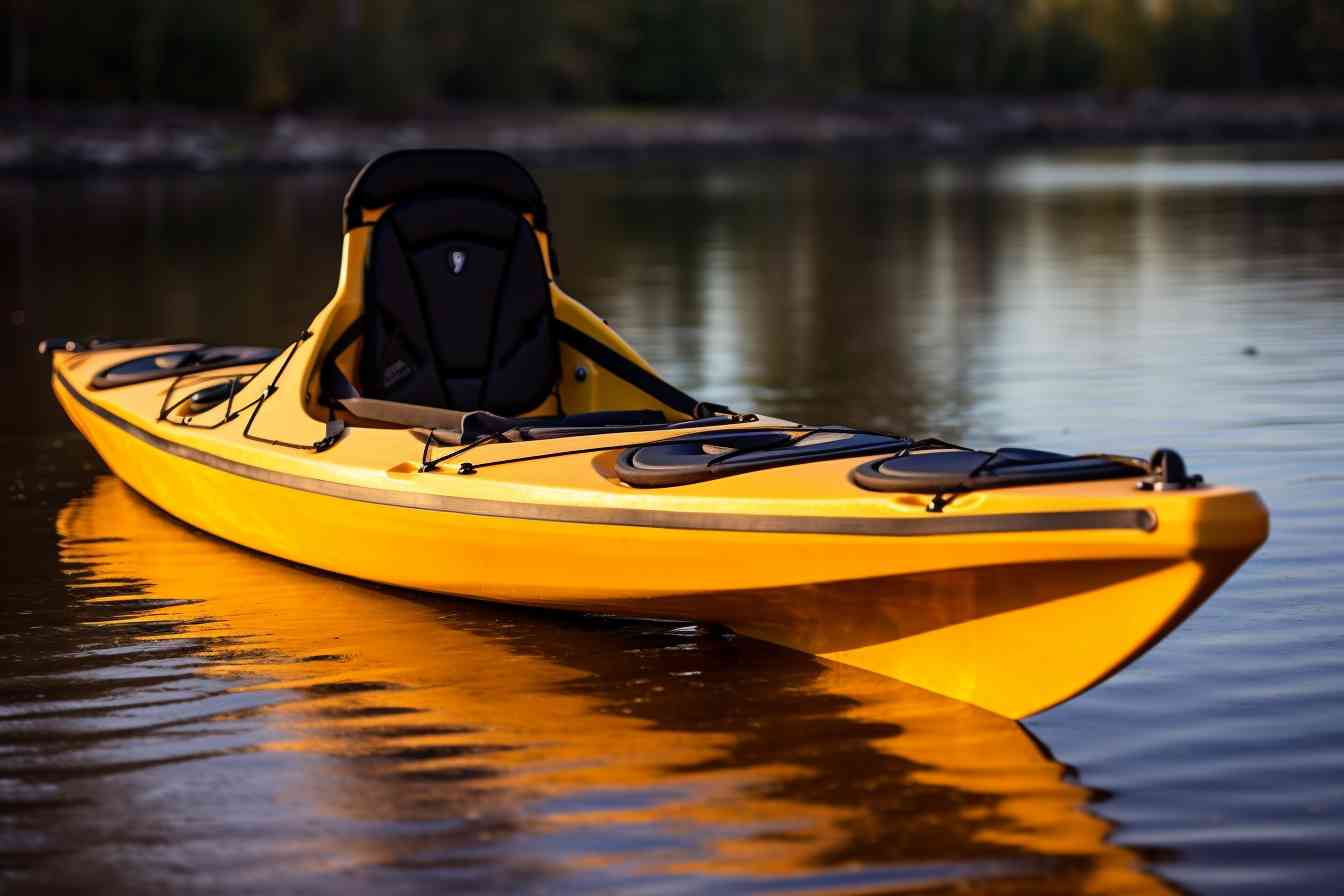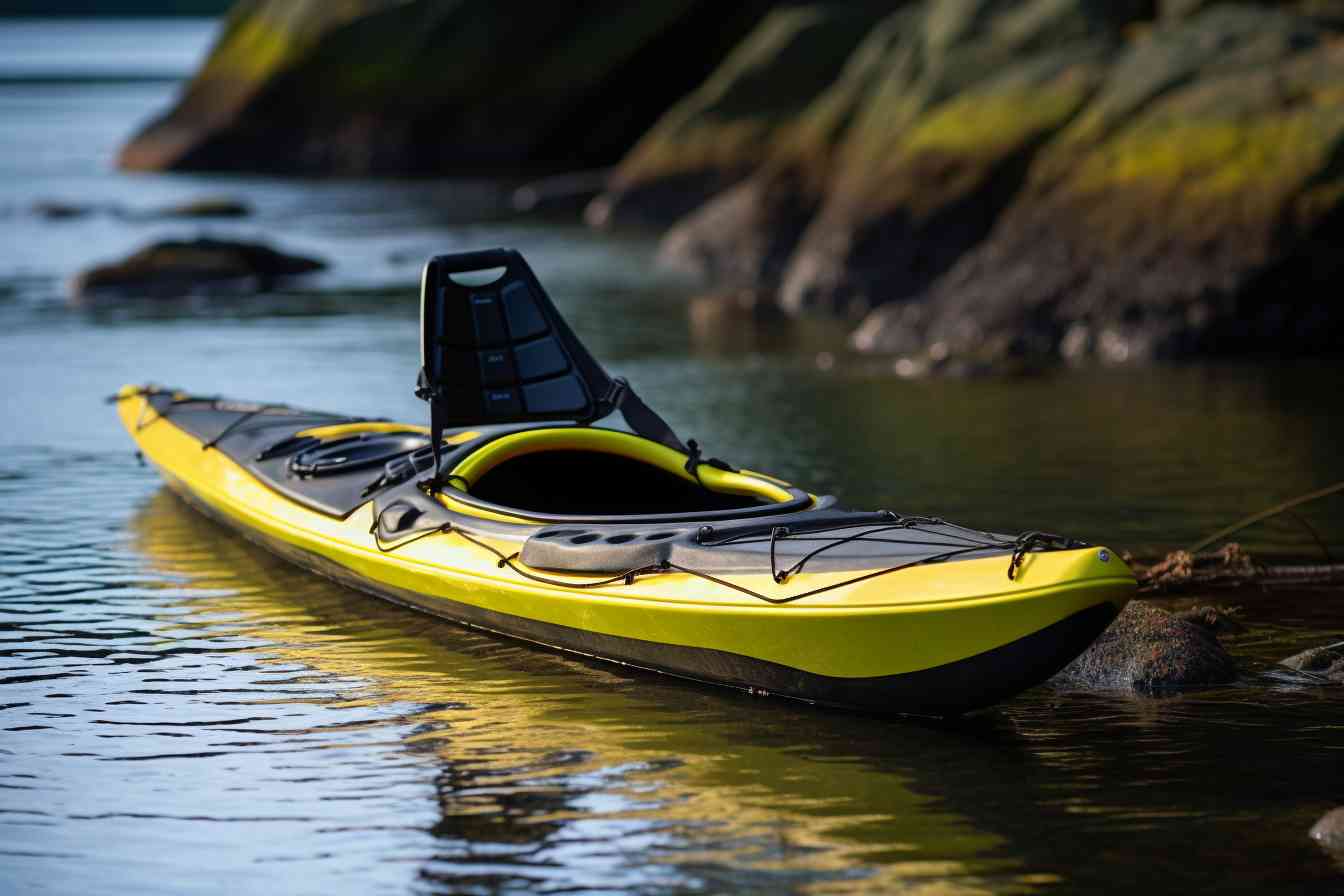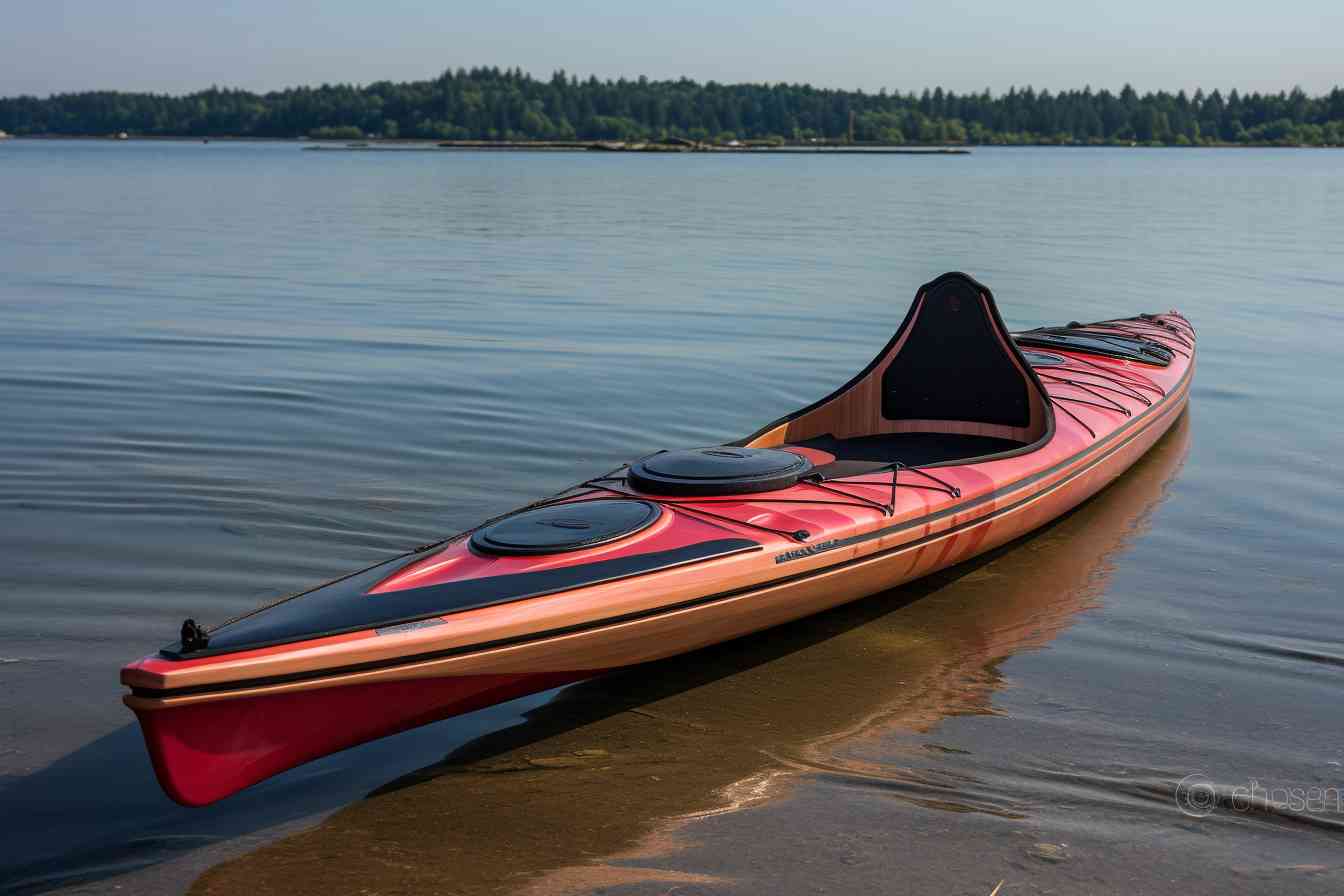Intro: Types Of Kayak Materials

Well, well, well – my adrenaline enthusiasts who are scouting for some kayak action, I see you’ve dropped by for some interesting insights. Trust me, I’ve got you covered. Here’s a scoop on the different types of kayak materials. Who knows, this might just be the weigh station you’re looking for en route to your kayak buying journey.
So, the first one in line is polyethylene. More than half of the kayaks floating around the world are made from this stuff, and there’s good reason for it. It’s tough as nails, resists damage from the elements and collisions, and doesn’t take a huge bite out of your wallet. The downside? Polyethylene kayaks are a bit on the heavy side, and they’re prone to warping if left in the sun for too long.
Next up, we have composite materials, such as fiberglass and carbon fiber. These lightweights have a serious advantage when it comes to speed and agility, making them the go-to for kayak racers. But delicate they are, quite susceptible to damage I’d say.
We also have ABS plastic – it’s like the middle child of polyethylene and composite materials. With durability and lightweight attributes, ABS kayaks are great for those wanting to balance between performance and durability.
Last but not least, we have thermoform plastics. These are tough, lightweight, and resistant to UV rays, making them excellent options for those planning for long sunny paddling days.
All in all, no kayak material is perfect. Each one comes with its own set of pros and cons. But hey, at the end of the day, your adventures should dictate the kind of kayak you choose, not the other way around, right? So paddle wisely and, importantly, paddle with a smile. Let’s see where the currents take us next time!
What Material Is Used To Make Kayaks?

Alright, let me dive right into it – the world of kayaks and their materiales. The foundational matter of any kayak is what truly shapes its character, its strengths, and its weaknesses, my friends. Just like us humans, eh? Difference is, kayaks are usually made from a selection of five materials – polyethylene, ABS plastic, composite, fabric with a frame, and inflatable plastic. Let’s get into the nitty-gritty of each, shall we?
Polyethylene is numero uno, a popular choice mostly for its wallet-friendly nature. More bang for your buck, eh? This material is rotationally molded, resulting in a single piece kayak — strong and definitely stout. However, like everything else, it has its downside. Especially when left in the sunlight for too long, it begins to warp, kind of like when we stay in the sun for too long – sunburn, anyone?
Then you’ve got ABS plastic. Kayaks made from this rather durable material have a more complex construction that involves two separate pieces — the deck and the hull, unlike polyethylene. Why, you ask? Well, the two parts are then fused together to form the kayak. The big advantage here is that ABS plastic is UV resistant – it’s like a built-in sunscreen!
Composite materials, like fiberglass or carbon-fiber, present the high-end options in this family of kayaking materials. These lightweight but powerful materials can be tailored to achieve specific performance characteristics. On the downside, they can be quite pricey… but quality comes with a price tag, doesn’t it?
Fabric with a frame, now that’s just as it sounds – a frame of either aluminum or wood with a fabric or PVC hull stretched over it, reminiscent of the classic Eskimo kayak. These babies are lightweight, portable, and surprisingly sturdy! But… you have to be careful with sharp objects, or you’ll end up haplessly swimming with the fishies…
Finally, inflatable plastics are the unsung heroes of the kayak world. They’re super portable, super lightweight, and they require minimal storage. But as with the fabric, steer clear of those sharp objects unless you’re in the mood for an impromptu dip!
Well, there you have it–the lowdown on kayak materials. The perfect kayak is out there for everyone, just waiting to be discovered, just like your perfect kayak adventure. Just remember, folks, to always keep your paddles wet and your spirits high!
What Makes The Plastic A Good Choice For Kayak Material?
Well, when it comes to the go-to material for many kayaks, plastic is definitely a material that comes to my mind. Let’s dive into why plastic is such a popular choice.
-
Durability: Hands down, one of the main reasons why plastic kayaks are so popular is their durability. I mean, if you’re going for a thrashing in the rapids or rocky beaches, plastic kayaks can really take a beating.
-
Lightweight: Despite their toughness, they’re surprisingly light weight. It’s pretty amazing when you think about it. This makes them easier to handle, especially for those of us who aren’t exactly Hercules.
-
Affordability: One of the real selling points of plastic kayaks is their affordability. It’s a no-brainer right? No need to break the bank for a sturdy, reliable kayak.
-
Maintenance Ease: Oh boy, don’t get me started on the maintenance. It’s as easy as pie. No special treatments or coatings are necessary with these babies.
-
Versatility: Whether you’re paddling in salt water or fresh water, a plastic kayak can take it all. This makes them incredibly versatile and suitable for a wide range of water conditions.
However, it’s not always sunshine and rainbows with plastic kayaks. They have their drawbacks, most notably their susceptibility to warping and deformation over time. But all things considered, plastic is a commendable material for kayaks, giving you a good bang for your buck with its durability, light weight and affordability.
Alright, now that we’ve demystified why plastic is such a beloved kayak material, next time you’re considering investing in a kayak, you know what to consider. Happy kayaking, friends!
What Is The Lightest Material For Kayaks?

Well, lemme clear the air here. If we’re talkin’ about the lightest material for kayaks, carbon-fiber is your go-to. Yup, that’s right – carbon fiber. I mean, you cannot beat the weight-to-strength ratio of this stuff if you’re lookin’ for lightness.
Now you might be thinkin’, “Carbon WHAT?” Let me explain – carbon-fiber is a composite material that’s made from super fine, super strong carbon strands which are woven into a fabric. These strands are then set in a hard plastic resin, creatin’ an almost impenetrable shield against whatever Mother Nature has to throw at ya.
Don’t get me wrong, it’s not all sunshine and roses. I’m not gonna sugarcoat it for ya; carbon-fiber kayaks are often a little more pricey than some other types. But let me tell you somethin’, if you’re serious about kayaking and you want a lightweight kayak that can handle some rough waters, carbon-fiber is worth every penny. Simply put, it’s the bee’s knees!
This material, it’s so light that you might forget it’s even there. Seriously, that’s not an exaggeration. Can you imagine, being out in the water, the sun settin’ in the horizon, and all you can feel is the gentle rock of the waves, not the weight of your kayak? It’s an absolutely idyllic scene, isn’t it? That’s the beauty of carbon-fiber. Lightness that offers freedom.
Boy, oh boy…just thinking about it makes me wish I was out on the water right now! But remember, if carbon-fiber isn’t in the cards for you, there are other lightweight materials like Kevlar and high-density polyethylene that are also top-notch.
How Do You Think Oil Could Be Made Into A Plastic Kayak?
Hey there! If you’ve ever wondered about how oil turns into that trusty plastic kayak, you’re not alone. I’ve pondered this question too, and I’m thrilled to share what I’ve discovered.
- It all begins with crude oil. You see, crude oil is a cocktail of hydrocarbons that we extract and refine to create a myriad of products – gasoline, jet fuel, and our kayak material, polyethylene.
- Polyethylene! That’s the magic word. Petroleum products are transformed into ethylene through a process called “cracking,” not as in “crack me up,” but it’s a chemical reaction using heat.
- The next step is polymerization – a fancy term for when we link those ethylene molecules into a larger chain, forming polyethylene. It’s not as complicated as it sounds, promise!
- This polyethylene is then shipped off to kayak manufacturers where it’s heated (don’t try this at home!) and molded into the shape of our beloved kayak. It really takes on a new identity!
- The kayaks then cool and harden – giving us a durable, lightweight, and affordable vessel that’s ready to conquer the rapids or gently float in the still water. Always an adventurer’s delight!
- One of the big selling points for plastic kayaks is how easily they can be repaired. A little heat, a little plastic, and voila – good as new! It’s a handyman’s dream.
- Lastly, polyethylene kayaks are recyclable – a win for Mother Nature! When the kayak’s journey ends, it can be melted down and reformed into a brand new one.
I must admit, the journey from crude oil to our boat on the lake is a lot more complex than I ever imagined. But it’s downright fascinating, isn’t it?
What Are Kayaks Made Of Now?

The first time I laid eyes on a kayak, I was immediately struck by its sleek and sturdy exterior. Do you know what it’s made of? Well, the material of a kayak can predict its durability, weight, and how it handles in water. Modern kayaks are crafted from different materials which, to be honest, have their own distinctive benefits and downsides.
Primarily, modern kayaks can be made from rotomolded plastic. This material is known for its robustness and is terrific when you need to weather harsh conditions. The malleability of this plastic lets it stand against swifter current and rocky obstacles. I have to say, this quality makes it a popular choice amongst kayakers who aren’t exactly scared of scratches and bumps. But, it’s worth mentioning, rotomolded plastic can be a tad heavier, which might cause some inconvenience during transport and handling.
Next up we’ve got composite materials – these are fancier stuff. These include fiberglass, Kevlar, and carbon fiber. They are lighter, more agile, and have a much faster tracking capability – simply a beauty to paddle. However, the drawback of composite kayaks is their fragility compared to their plastic siblings. They don’t exactly appreciate collisions. Plus, they can be a bit heavy on the wallet.
Then there’s thermoformed ABS. It’s sort of the middle ground between plastic and composite kayaks. It’s lighter than plastic, sturdier than composite, and doesn’t require you to win the lottery. Perfect for those who want a step up from the basic plastic, but aren’t ready for the composite commitment yet.
In a nutshell, there is no “one size fits all” solution. The material of your kayak should depend on your kayaking plans, experience, budget, and personal preferences. Isn’t it amazing how different materials can impact your kayaking experience?
What Are The Three Types Of Kayaks?
Alright now, let’s dip our toes into the riveting world of kayaks, shall we? Now, it’s important to remember—there’s more to a kayak than meets the eye. Really, the material it’s made from can make a world of a difference in your kayaking experience. So, let’s talk about the three primary types of materials used to construct these water beauties.
First off – Polyethylene. Common as dirt, but solid as a rock. It’s the most widely used material in the creation of kayaks. Why, you might ask? Well, it’s quite simple – it’s incredibly durable and cost effective. It’ll take a beating without a bleating, if you get my drift.
Next up, we got the lightweight champ – Thermoformed ABS. Sounds fancy, doesn’t it? It is! This material is a step up from polyethylene. It’s lighter, UV-resistant and offers superior performance. Plus, it looks glossy and sleek—bound to turn heads at the lake!
Lastly, we’ve got Composite. Composite kayaks are made from fiberglass, carbon, or Kevlar. They’re the crème de la crème, the top dog, the big kahuna of the kayak world. Why? They’re lightweight, stiff, and efficient on the water. They’re perfect for professionals looking for speed and precision. However, keep in mind they’re far more expensive than our previous two contenders.
So there you have it—the trio of materials commonly used in the wonderful world of kayaks. Of course, the best one for you will depend on your needs, budget, and style of kayaking. Good luck, and paddle on.
Types Of Kayak Materials And Their Uses
Alright, let’s dive straight into the topic. We are looking into different types of materials used in making kayaks.
-
Polyethylene: This is the most common material used in kayak crafting. It’s loved for its affordability, toughness, and resilience – really, it can take quite a beating! However, it’s not indestructable, exposure to the sun can damage it over time. Always remember to store your polyethylene kayak properly to lengthen its lifespan.
-
ABS Plastic: If you want something that’s a step up from polyethylene, ABS plastic is the material for you. It has superior resistance to UV damage and is easier to repair. Its performance on water is also commendable, making it a go-to for many kayaking enthusiasts.
-
Composite: This type encompasses a few materials: fiberglass, carbon fiber and Kevlar. They tend to be lighter and faster on water than plastic kayaks. Mind you, they are more expensive. But, if you’re serious about kayaking, the investment is worth every penny! Just be sure to handle it with care, they’re not as damage-resistant as their plastic counterparts.
-
Thermoform: Thermoform kayaks are your mid-range boats. They’re lighter than polyethylene kayaks – making them easier to handle – and they’re more resistant to UV damage. They are usually made from either ABS or polycarbonate plastic. If you’re looking for a good balance between price, strength, performance and aesthetics, thermoform kayaks might be your best bet!
-
Inflatable: This type is made from PVC, Nitrylon, or Hypalon. If you’re always on the go, this could be your ideal kayak. They are easy to transport and store, thanks to their flexibility. Just be wary of sharp objects when you’re out on the water!
-
Wood: Yes, wood. It may sound old-school but wood kayaks have their admirers. Handcrafted with marine-grade woods, they are real beauties. On top of that, they offer good performance too. But bear in mind, they demand regular maintenance to keep ‘em in prime condition.
-
Folding: Finally, there are folding kayaks. Constructed from a wood or aluminum frame covered with a durable fabric. They offer similar benefits to inflatables – particularly when it comes to portability. They’re incredibly compact when folded down, yet they’re sturdy and can deal with choppy water when assembled.
Remember, when choosing a kayak, consider your kayaking needs, preference, and budget. The best kayak material for you is the one that suits your whole kayaking lifestyle. Happy paddling, folks!
Final Verdict
Whoa now! Alright, let’s come to a finale here by determining the very best when it comes to kayak materials, allowing you to choose a pristine option for your next river ride or lake adventure. Alrighty then, are you wondering what’s the optimal material for your kayak? Well, there’s no single correct answer, as it heavily relies on your personal preferences and needs.
So, here I am – about to blow your mind with my final verdict. If light-weight and portability are your prime concerns, then you can’t beat a good inflatable kayak. They’re easy-peasy to carry around and the material is pretty hard-wearing too – it’s gotta be if it’s going to stand up to all those jaggy rocks in the rapids, right?
But hold your horses, we ain’t done yet! If speed and performance are your number one priorities, then a good fiberglass, or even better, a carbon fiber kayak is your best bet. These materials are rigid and sleek, allowing for super smooth gliding across the water at top speeds.
Now, if you’re the adventurous type and fancy some off-road…err I mean off-river experiences, then a polyethylene kayak might just be your best pal. These are tough little fellas that can stand up to the rough and tumble of paddling in wild, untidy waters.
So, there you have it, folks – the final verdict on the most appropriate material for your lovely little kayak. I reckon you’re ready to hit the waters now, ain’t ya? Happy paddling! If you ask me, it’s all about figuring what suits you best and then, it’s plain sailing….or should I say kayaking?
Frequently Asked Questions
1. What are the different types of materials used in making a kayak?
The common materials used in creating a kayak include polyethylene, ABS plastic, composite materials (like fiberglass and Kevlar), and even wood. Each of these materials has its own strengths and quirks, making them suitable for different types of kayaking adventures.
2. Why are most kayaks made from polyethylene?
Ah, good question! Polyethylene is a popular choice due to its durability and affordability. It’s tough enough to withstand impact, which makes it perfect for anyone new to kayaking or for rougher waters.
3. What are the benefits of ABS plastic kayaks?
ABS plastic, I must say, strikes a great balance between durability, weight, and cost. It is often used in thermoform kayaks, providing resistance to UV rays and making the kayak lighter, which is always a plus!
4. Why would someone choose a composite kayak?
Composite kayaks, made from materials like fiberglass and Kevlar, are often chosen for their performance and lightness. They’re easier to paddle and are usually faster on water. However, they can be a bit pricey.
5. How does a wooden kayak differ from other types?
Wooden kayaks hold a nostalgic appeal, don’t they? Besides aesthetics, wooden kayaks are lightweight and typically perform better than plastic ones. However, they require more maintenance to keep them in shipshape condition.
6. Are inflatable kayaks durable?
Surprisingly, yes! Inflatable kayaks, despite their not-so-rugged appearance, are quite sturdy. Made from materials like PVC, Nitrylon, or Hypalon, they can withstand quite a bit of punishment and are perfect for easy storage and transport.
7. Can a kayak’s material influence its price?
Absolutely! The material of a kayak greatly influences its price. For instance, a polyethylene kayak would generally be cheaper than a composite one due to the difference in manufacturing costs.
8. What is the lightest kayak material?
If speed and ease of transport are your game, composite kayaks made from carbon fiber or Kevlar typically weigh the least. However, they also tend to be more costly.
9. Does the material of a kayak affect its maintenance needs?
It sure does. Polyethylene and ABS plastic kayaks are relatively low maintenance, while wooden ones require a bit more care. Inflatable kayaks should be dried out properly to prevent mold and mildew.
10. Can a kayak’s material influence its performance?
Definitely! For example, composite kayaks generally offer better speed and maneuverability than their plastic counterparts. So the next time you’re selecting a kayak, consider your needs and kayak material for the best performance.

